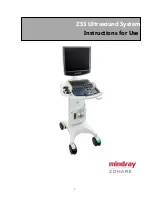
6.30
Instructions for Use & Clinical Reference Manual (US)
HEMODYNAMIC EFFECTIVENESS RESULTS
The Impella Catheters directly unload the left ventricle (LV) and propel blood forward, from
the left ventricle into the aorta, in a manner most consistent with normal physiology. Impella
provides both an active forward flow
1,2
and systemic aortic pressure (AOP) contribution,
1,2,3
leading to an effective increase in mean arterial pressure (MAP) and overall cardiac power
output (CPO).
1,4
Combined with LV unloading, Impella support reduces end-diastolic volume and
pressure (EDV, EDP)
27-31
and augments peak coronary flow,
1,2,5,6
leading to a favorable alteration
of the balance of myocardial oxygen supply and demand. This cascade of hemodynamic effects
has been described in the literature
21,733
and validated in computational modeling and a variety
of pre-clinical and clinical studies.
1-7
For the RECOVER I study (see above), hemodynamic data was collected at baseline and over
time to evaluate the robustness of the hemodynamic support with the Impella 5.0 and Impella
LD devices in patients experiencing hemodynamic compromise or cardiogenic shock post cardiac
surgery. The data collected showed an immediate improvement of the hemodynamics of PCCS
patients post device implant, as shown in Figure 6.29. In addition, concomitantly, as patients’
hemodynamics improved, a rapid and sustained weaning of inotropic and pressor support was
also observed, which is shown in Figure 6.30
.
Figure 6.29 Improvement in patient hemodynamics (from baseline to 48 hr post-device
implant) for RECOVER I patients
Summary of Contents for Impella 2.5
Page 4: ......
Page 8: ......
Page 10: ......
Page 12: ......
Page 15: ...2 WARNINGS AND CAUTIONS WARNINGS 2 1 CAUTIONS 2 3...
Page 16: ......
Page 22: ......
Page 38: ......
Page 40: ......
Page 108: ......
Page 171: ......
Page 173: ......
Page 181: ......
Page 183: ......
Page 201: ......
Page 203: ......
Page 205: ......
Page 210: ...INDEX TBD...
















































